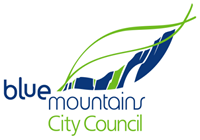Blue Mountains City
Local workers - Method of travel to work - All industries
This data reveals the main modes of transport used by local workers in a particular industry to get to work. Workforce transport data for Blue Mountains City is very useful in transport planning as it informs decision-makers about the effectiveness and availability of public transport.
There are a number of reasons why people use different Modes of Transport to get to work including:
- The availability of affordable and effective public transport options between place of residence and place of work (For instance, industries located near railway stations are likely to have higher public transport use than those located away from main public transport routes);
- The number of motor vehicles available from within a household; and
- The travel distance to work, which for example, can allow people to walk or bicycle to their place of employment.
Method of Travel to Work data should be viewed in conjunction with Workers place of residence and resident place of work for a clearer picture of where people come from to work in Blue Mountains City, and Employment locations for the Destination Zones they work in and how they arrive there.
Data source
Australian Bureau of Statistics (ABS) – Census 2016 & 2021 – by place of work
Current industry:
Current benchmark:
| Local workers method of travel to work | |||||||||
|---|---|---|---|---|---|---|---|---|---|
| Blue Mountains City - All industries | 2021 | 2016 | Change | ||||||
| Main method of travel | Number | % | New South Wales% | Number | % | New South Wales% | 2016 - 2021 | ||
| Car, as driver | 8,587 | 43.5 | 43.2 | 10,938 | 59.3 | 57.7 | -2,351 | ||
| Car, as passenger | 606 | 3.1 | 3.2 | 845 | 4.6 | 4.3 | -239 | ||
| Train | 276 | 1.4 | 2.8 | 658 | 3.6 | 11.3 | -382 | ||
| Bus | 34 | 0.2 | 1.1 | 75 | 0.4 | 4.4 | -41 | ||
| Ferry | 5 | 0.0 | 0.1 | 0 | 0 | 0.2 | +5 | ||
| Tram | 3 | 0.0 | 0.0 | 0 | 0 | 0.1 | +3 | ||
| Truck | 148 | 0.7 | 0.7 | 173 | 0.9 | 1.0 | -25 | ||
| Motorbike/Motor scooter | 62 | 0.3 | 0.4 | 64 | 0.3 | 0.6 | -2 | ||
| Bicycle | 60 | 0.3 | 0.4 | 72 | 0.4 | 0.7 | -12 | ||
| Taxi/Other | 35 | 0.2 | 0.2 | 56 | 0.3 | 0.2 | -21 | ||
| Other - multiple methods | 74 | 0.4 | 0.5 | 203 | 1.1 | 1.2 | -129 | ||
| Walked only | 566 | 2.9 | 2.5 | 826 | 4.5 | 3.9 | -260 | ||
| Worked at home | 5,657 | 28.6 | 31.3 | 2,101 | 11.4 | 4.9 | +3,556 | ||
| Did not go to work | 3,559 | 18.0 | 13.2 | 2,279 | 12.4 | 8.7 | +1,280 | ||
| Not stated | 85 | 0.4 | 0.5 | 163 | 0.9 | 1.0 | -78 | ||
| Total | 19,757 | 100.0 | 100.0 | 18,453 | 100.0 | 100.0 | +1,304 | ||
Source: Australian Bureau of Statistics, Census of Population and Housing 2016 and 2021. Compiled and presented by .id (informed decisions) Please refer to specific data notes for more information | |||||||||


Dominant groups
In 2021, there were 313 people who caught public transport to work (train, bus, tram or ferry) in Blue Mountains City, compared with 9,403 who drove in private vehicles (car – as driver, car – as passenger, motorbike, or truck).
Analysis of the method of travel to work in Blue Mountains City in 2021 compared to the New South Wales workforce within Blue Mountains City shows that 1.6% used public transport, while 47.6% used a private vehicle, compared with 3.9% and 47.5% respectively in New South Wales.
The major differences between the method of travel to work of the workforce in Blue Mountains City and the New South Wales workforce were:
- A larger percentage of local workers who did not go to work (18.0% compared to 13.2%)
- A smaller percentage of local workers who worked at home (28.6% compared to 31.3%)
- A smaller percentage of local workers who travelled by train (1.4% compared to 2.8%)
- A smaller percentage of local workers who travelled by bus (0.2% compared to 1.1%)
Emerging groups
The largest changes in the method of travel to work of the workforce in Blue Mountains City between2016 and 2021 were:
- Worked at home (+3,556 local workers)
- Car, as driver (-2,351 local workers)
- Did not go to work (+1,280 local workers)
- Train (-382 local workers)
